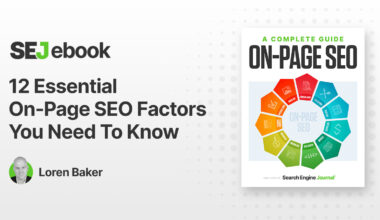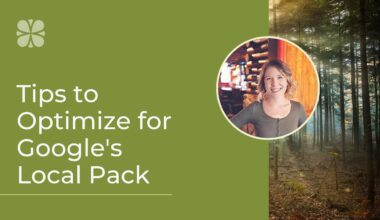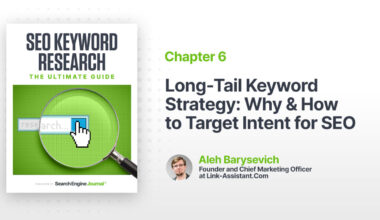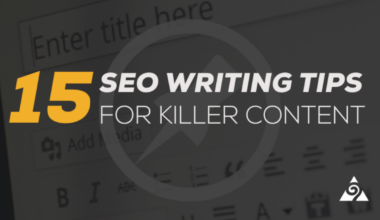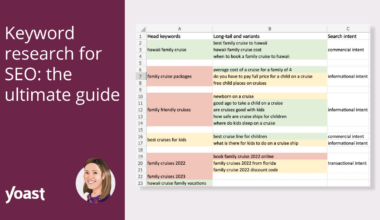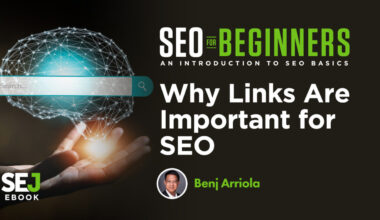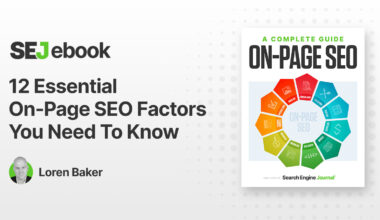Introduction: Understanding Google’s Ranking Algorithm
If you want to rank on the first page of Google, you need to understand how Google’s ranking algorithm works. Google uses a complex algorithm to determine which pages are most relevant and valuable to its users. The algorithm takes into account hundreds of factors to determine the order of search results.
One of the most important factors in Google’s ranking algorithm is relevance. Google wants to provide its users with the most relevant results possible. To determine relevance, Google looks at the content of your website and how it relates to the search query. This is where keyword research comes in. By researching the keywords your target audience is searching for, you can create content that is more likely to rank for those keywords.
Another important factor in Google’s ranking algorithm is authority. Google wants to provide its users with content that is trustworthy and authoritative. One way to demonstrate authority is by building high-quality backlinks to your website. Backlinks are links from other websites that point to your website. The more high-quality backlinks you have, the more authoritative your website appears to Google.
On-page optimization is also important for ranking on Google’s first page. This includes optimizing your website’s meta tags, headers, and content. By including relevant keywords in your meta tags and headers, you can signal to Google what your website is about. Additionally, creating high-quality content that engages your audience can help improve your rankings.
Social media can also play a role in your website’s visibility and engagement. By sharing your content on social media platforms, you can increase the visibility of your website and attract more traffic. Additionally, social signals such as likes, shares, and comments can help improve your website’s authority and relevance.
In conclusion, understanding Google’s ranking algorithm is essential if you want to rank on the first page of Google. By conducting keyword research, optimizing your website’s content and meta tags, building high-quality backlinks, and leveraging social media, you can improve your website’s visibility and engagement. However, keep in mind that achieving a high ranking on Google takes time and patience. Consistency and a long-term strategy are key to success.
Conducting Keyword Research for Targeted Traffic
Keyword research is the foundation of any successful SEO strategy. It involves identifying the keywords and phrases that your target audience is searching for on search engines like Google. By optimizing your website’s content for these keywords, you can attract more targeted traffic to your website.
Here are some steps to conduct keyword research for your website:
1. Brainstorm Seed Keywords: Start by brainstorming a list of seed keywords that are relevant to your business or niche. These are broad keywords that describe the products, services, or topics that your website covers.
2. Use Keyword Research Tools: Use keyword research tools like Google Keyword Planner, SEMrush, or Ahrefs to expand your list of seed keywords. These tools will show you related keywords, search volume, and competition level for each keyword.
3. Analyze Competitor Keywords: Analyze the keywords that your competitors are targeting on their website. This will give you an idea of what keywords are working well in your industry and what keywords you should target.
4. Group Keywords by Topic: Group your keywords by topic or theme. This will help you create content clusters that are optimized for a specific topic or keyword.
5. Prioritize Keywords: Prioritize your keywords based on search volume, competition level, and relevance to your business. Focus on the keywords that have a high search volume and low competition level.
6. Optimize Your Content: Once you have identified your target keywords, optimize your website’s content for these keywords. Include them in your website’s meta tags, headers, and content. However, make sure to use them naturally and don’t overstuff them.
By conducting keyword research, you can attract more targeted traffic to your website and improve your website’s visibility on search engines like Google. However, it’s important to remember that SEO is a long-term strategy, and it takes time and patience to see results. Stay consistent with your keyword targeting and content creation, and you’ll see an improvement in your website’s rankings over time.
On-Page Optimization Techniques for Higher Rankings
On-page optimization refers to the practice of optimizing the content and structure of your website to improve its relevance and authority for specific keywords. Here are some on-page optimization techniques that can help improve your website’s rankings:
1. Optimize Your Title Tags: The title tag is one of the most important on-page SEO elements. It tells search engines what your page is about. Make sure to include your target keyword in the title tag and keep it under 60 characters.
2. Use Header Tags: Header tags (H1, H2, H3) are used to structure the content on your page. Make sure to include your target keyword in at least one of your header tags.
3. Optimize Your Meta Descriptions: The meta description is the snippet of text that appears below the title in search engine results. It should accurately describe the content of your page and include your target keyword.
4. Use Alt Text for Images: Alt text is used to describe the content of an image to search engines. It’s important to include your target keyword in the alt text to help improve your page’s relevance.
5. Improve Your Page Speed: Page speed is an important factor in Google’s ranking algorithm. Use tools like Google PageSpeed Insights to identify areas of your website that need to be optimized for speed.
6. Create High-Quality Content: Creating high-quality and engaging content is essential for on-page optimization. Make sure to include your target keyword in the content naturally and don’t overstuff it.
7. Use Internal Linking: Internal linking is the practice of linking to other pages on your website. This helps search engines understand the structure of your website and improves your website’s authority.
By implementing these on-page optimization techniques, you can improve your website’s relevance and authority for specific keywords. However, it’s important to remember that on-page optimization is just one part of a larger SEO strategy. Consistency and a long-term approach are key to achieving higher rankings on Google.
Building High-Quality Backlinks for Authority and Trust
Backlinks are one of the most important factors in Google’s ranking algorithm. They are a signal to Google that other websites consider your content to be valuable and relevant. However, not all backlinks are created equal. Building high-quality backlinks is essential for improving your website’s authority and trust.
Here are some ways to build high-quality backlinks:
1. Guest Blogging: Guest blogging is the practice of writing a blog post for another website in your industry. In return, you can include a link back to your website in your author bio or within the content. Make sure to choose reputable and relevant websites for guest blogging opportunities.
2. Broken Link Building: Broken link building is the practice of finding broken links on other websites and offering a replacement link to your content. This technique requires some research and outreach, but it can be a highly effective way to build high-quality backlinks.
3. Skyscraper Technique: The Skyscraper technique involves finding high-performing content in your industry and creating a better version of it. After creating the content, you can reach out to websites that linked to the original content and offer them a link to your improved version.
4. Infographics: Infographics are highly shareable and engaging content types that can attract high-quality backlinks. Create an informative and visually appealing infographic and reach out to websites in your industry to share it.
5. Social Media: Sharing your content on social media platforms can attract links from other websites. Additionally, social media engagement can improve your website’s authority and trust.
It’s important to remember that building high-quality backlinks takes time and effort. Focus on creating valuable and informative content that other websites will want to link to. Additionally, prioritize relevance and authority when choosing websites for link building opportunities. By building high-quality backlinks, you can improve your website’s authority and trust, which can lead to higher rankings on Google.
Leveraging Social Media to Boost Visibility and Engagement
Social media can be a powerful tool for improving your website’s visibility and engagement. Here are some ways to leverage social media for SEO:
1. Share Your Content: Share your website’s content on social media platforms like Facebook, Twitter, and LinkedIn. This can increase the visibility of your website and attract more traffic.
2. Use Hashtags: Hashtags can help your content reach a wider audience on social media. Research relevant hashtags and include them in your social media posts.
3. Engage with Your Audience: Engage with your audience on social media by responding to comments and messages. This can improve your website’s engagement and trust.
4. Share User-Generated Content: User-generated content (UGC) is content created by your audience. Sharing UGC on social media can improve your website’s engagement and trust.
5. Build Relationships with Influencers: Influencers are people with a large following on social media. Building relationships with influencers in your industry can help you reach a wider audience and improve your website’s authority.
6. Use Social Signals: Social signals like likes, shares, and comments can improve your website’s authority and relevance. Encourage your audience to engage with your content on social media.
7. Optimize Your Social Media Profiles: Optimize your social media profiles for SEO by including relevant keywords and links to your website.
By leveraging social media for SEO, you can improve your website’s visibility and engagement. However, it’s important to remember that social media is just one part of a larger SEO strategy. Consistency and a long-term approach are key to achieving higher rankings on Google.
Final Thought: Consistency and Patience are Key to Long-Term Success
Achieving a high ranking on Google’s first page is not a quick or easy process. It takes time, effort, and consistency to see results. However, staying consistent with your SEO strategy and having patience can lead to long-term success.
Consistency means creating a plan and sticking to it. This includes regularly creating high-quality content, conducting keyword research, optimizing your website’s on-page elements, and building high-quality backlinks. By staying consistent with your SEO efforts, you can steadily improve your website’s rankings over time.
Patience is also important when it comes to SEO. It can take weeks or even months to see the results of your efforts. It’s important to stay patient and not give up on your SEO strategy too soon. Keep in mind that SEO is a long-term strategy, and the results are worth the wait.
In conclusion, consistency and patience are key to achieving long-term success with SEO. By staying consistent with your SEO efforts and having patience, you can improve your website’s visibility and attract more targeted traffic. Remember to focus on creating high-quality content, conducting keyword research, optimizing your website’s on-page elements, building high-quality backlinks, and leveraging social media. With time and effort, you can achieve a high ranking on Google’s first page.













